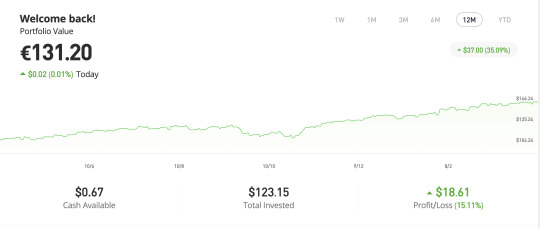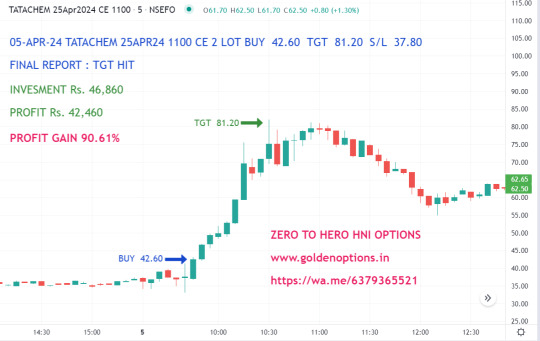#Stock Trading
Text

Join Bigul and enhance your trading experience with AI tools
https://bigul.co/
118 notes
·
View notes
Text
"Let’s have a look now at stock tips.
There are many ways to be successful at stocks. For instance, you can be lucky, or you can cheat. Those are the two ways.
Lucky is difficult. Not impossible, but it does require some spells. You have to wear a small bag around your neck stuffed with thistle and rosemary, and burn the one thing in your life most precious to you. And even then, half the time you just end up with your sourdough turning out perfect, or getting Wordle in two, which if you think about it is actually much more impressive than getting it in one, you will say to everyone you know even though they extremely do not care. What I’m saying is it’s hard to aim luck.
So your best bet is to cheat. Fortunately, there are a TON of ways to cheat. For instance, you can do some corporate espionage, find out information before it hits the open market, and then invest accordingly. Or you can manipulate the markets, causing untold suffering and wiping out the entire economy for the sake of buying your third house. If history tells us anything, and I hope it doesn’t, you won’t ever get punished.
But the absolute best way to cheat, and doctors hate this one weird trick, is to join congress. Because there is no law against actively investing while in congress despite the fact that you will be constantly told secret information that will radically affect the markets. And you can just make a ton of money on that info without any consequences because who is going to pass a law against that? You? Don’t make me laugh. Please don’t make me laugh. It hurts so terribly when I laugh. Ow. Ouch. Oh man. I miss laughing. I miss it so much.
This has been stock tips."
- Joseph Fink and Jeffrey Cranor, from Welcome to Night Vale, ep. 220.
#joseph fink#jeffrey cranor#quote#quotations#welcome to night vale#wtnv#stock market#trading stocks#stock trading#eat the rich#greed#stock tips#investing stocks#corruption#capitalism
152 notes
·
View notes
Text
So recently I've found myself gaining an interest in the stock market. Anyone have any suggestions on investing for beginners or recommendations of youtubers who delve into this?
40 notes
·
View notes
Text


Call vs. Put Options
This guide will give you a complete rundown of call options and put options.
A call option is the right to buy a stock at a specific price by an expiration date, and a put option is the right to sell a stock at a specific price by an expiration date.
That's the short summary of these options contracts. Now, let's take a closer look at how call and put options work, as well as the risks involved with options trading.
How does a call option work?
A call option is a contract tied to a stock. You pay a fee, called a premium, for the contract. That gives you the right to buy the stock at a set price, known as the strike price, at any point until the contract's expiration date.

You're not obligated to execute the option. If the price of the stock increases enough, then you can execute it or sell the contract itself for a profit. If it doesn't, then you can let the contract expire and only lose the premium you paid.
The breakeven point on a call option is the sum of the strike price and the premium. When you have a call option, you can calculate your profit or loss at any point by subtracting the current price from the breakeven point.

As an example, let's say that you're bullish on Apple (AAPL -0.54%) and it's trading at $150 per share. You buy a call option with a strike price of $170 and an expiration date six months from now. The call option costs you a premium of $15 per share. Since options contracts cover 100 shares, the total cost would be $1,500.
The breakeven point would be $185 since that's the sum of the $170 strike price and the $15 premium. If Apple reaches a price of $195, your profit would be $10 per share, which is $1,000 total. If it only goes to $175, you'd have a loss of $10 per share. Your maximum potential loss would be the $1,500 you paid for the premium.
How does a put option work?
A put option is a contract tied to a stock. You pay a premium for the contract, giving you the right to sell the stock at the strike price. You're able to execute the contract at any point until its expiration date.
If the price of the stock decreases enough, then you can sell your put option for a profit. You're not obligated to execute the contract, so if the price of the asset doesn't drop enough, you can let the contract expire.
The breakeven point on a put option is the difference between the strike price and the premium. When you have a put option, you can calculate your profit or loss at any point by subtracting the breakeven point from the current price, or by using the calculator at the bottom of this page.
To give you an example, imagine Netflix (NFLX -0.51%) trades at $500 per share. You think it's overvalued, so you buy a put option with a strike price of $450 and an expiration date three months away. The premium costs $10 per share, which is a total price of $1,000 for the contract.
The breakeven point would be $440, the difference between the $450 strike price and the $10 premium. If Netflix plummets to $400, then you're up $40 per share ($4,000 total) on your put option. If it doesn't drop below $450 at all, then you'd only be able to let the option expire and eat the cost of the premium.

Risks of call vs. put options
The risk of buying both call and put options is that they expire worthless because the stock doesn't reach the breakeven point. In that case, you lose the amount you paid for the premium.
It's also possible to sell call and put options, which means another party would pay you a premium for an options contract. Selling calls and puts is much riskier than buying them because it carries greater potential losses. If the stock price passes the breakeven point and the buyer executes the option, then you're responsible for fulfilling the contract.
The benefit of buying options is that you know from the beginning the maximum amount you can lose. This makes options safer than other types of leveraged instruments such as futures contracts.
However, options can be riskier than simply buying and selling stocks because there's a greater possibility of coming away with nothing. When investing in stocks, you only need to predict whether the stock goes up or down. For options trading, you need to predict three things correctly:
The direction the stock will move.
The amount the stock will move.
The time period of the stock movement.
If you're wrong about any of those, then the options contract will be worthless. While there's the potential for greater returns with options, they're also harder to trade successfully.
Despite the challenge of successfully trading call and put options, they provide an opportunity to amplify your returns. That can make them a valuable addition to a balanced portfolio. For investors interested in options, there are also more advanced strategies that go beyond buying calls and puts.

#kemetic dreams#call option#options#put options#money#stocks#stock market#markets#investing stocks#stock trading#nasdaq#balanced portfolio#money talk
10 notes
·
View notes
Text

125 notes
·
View notes
Text
AIRTEL
JAN FUT
BUY
ENTRY - 997
SL- 994.9
TARGET 1002+
LOT SIZE -950
6 notes
·
View notes
Text
US stock trading sharing
As long as you have any investment questions, you can ask me and I can help you solve any investment problems. My confidence comes from the recognition of my abilities
#donald trump#finance#investing#nyc#stock market#ask#answered#ask game#stock trading#shares#stock tips#stockstowatch#stockstobuy#stockholm#investment#investors#real estate investing#investing stocks#savings#options#opportunities
2 notes
·
View notes
Text
the beginner's guide to making money by investing in stocks (hot girl version)
since one of my goals here is to make money i wanted to teach you about what i know about investing in stocks. i use the website etoro to invest, below you can see a picture of my portfolio at the moment. i am by no means an expert but i've found the whole process of investing to be unnecessarily mystified so i thought i'd share what i have learned so far.

what does buying stocks mean?
in simple terms, buying stocks means buying a (tiny) fraction of a company. if the value of the company increases the value of your share goes up, if the company loses money the value goes down.
when should i buy and sell?
ideally, you should buy when you think that the value of a stock will increase in the future and you should sell when you have made a profit. in practice, this means you try to invest when a stock has reached its lowest value and you sell when you think it has reached its peak (but this is, of course, impossible to predict perfectly).
where can i buy stocks?
i would personally recommend going through an online stock trading platform, like etoro. you can look up what the best stock trading platforms are for your country. you should pick one with minimal fees that offers some tutorial or introduction to trading.
you can also go through a stock broker (a person that makes the investments for you) or more broadly your bank - be aware though, that they might take a cut of your profit for their services which is something you need to subtract from your expected profit.
how do i know what to invest in?
There are a few recommendations that I have seen time and time again:
ETFs - exchange-traded funds are bundles of stocks that are traded together. the advantage of ETFs is that they don't rely on a single company making a profit, the companies just need to make a profit overall. they are much less volatile than individual stocks and since economies usually always grow in the long-term, you are very likely to make a profit.
large companies - you can also invest in large, well-established companies that are very likely to make a profit and very unlikely to go bankrupt (e.g., apple, amazon, etc.)
diversify - this means you should invest in a wide variety of companies and industries. even when one of them does really poorly you are likely to make a profit overall.
copy-trading - this means 'copying' the investments of a more experienced trader. so you specify an amount of money and invest it the same way someone who knows what they're doing is.
how much should i invest?
most websites have a minimum amount you need to invest so you could start with that to get a feel for how it works.
as a rule of thumb, they say you should not invest money that you will need within the next 5-10 years. that rule prevents you from having to sell your stock at an unfortunate moment - even if you initially write losses, you can wait for a moment when your stocks have increased in value again.
if you have a fixed income you can commit to investing a part of your income every month. i've seen this referred to as dollar-cost averaging and i have not tried it yet but it is said to be a good way to build wealth in the long term.
how do i actually make money using this knowledge?
simple answer: by selling your stock at the right time and withdrawing the money. investing is a marathon, not a sprint - you should generally give your money some time to make a profit instead of checking every day and panic selling when you see a slight change. disclaimer: at least where i am from you need to declare what you made from stocks as income and pay taxes on it.
thank you so much for reading!
if you have questions or know more about this and want to add something please leave a comment 💕
#financial freedom#law of assumption#stock trading#financial empowerment#financial education#neville goddard#manifesting money#manifestation#rich girl
5 notes
·
View notes
Text

05 APR 2024
TATACHEM 1100 CE TGT HIT
PROFIT Rs. 42,460.
www.goldenoptions.in
https://wa.me/6379365521
2 notes
·
View notes
Text
Unveiling the Truth: Why Indian Traders Struggle

Introduction:
Discover the harsh reality behind the staggering losses incurred by Indian traders and the misleading influences that perpetuate their financial downfall.
The Allure and Deception of Option Trading
Indian traders, enticed by the allure of option trading, have faced devastating losses as influencers peddle unrealistic dreams of instant wealth. Many have fallen victim to their lack of expertise and adherence to faulty trading methodologies. This trend highlights the crucial need for informed decision-making and market understanding.
Navigating the Terrain of Option and Future Trading
Option and Future Trading in India offer lucrative opportunities for profit, yet the landscape is fraught with risks stemming from market volatility and regulatory challenges. Leveraging tools like Odoo software can streamline operational tasks, providing a competitive edge amidst this dynamic environment.
Decoding Call and Put Options
Understanding call and put options is pivotal in the realm of stock trading. Call options grant the right to purchase a stock, while put options enable selling before a specified date. Mastery of contract components such as premiums, strike prices, and durations empowers traders to make informed decisions aligned with market prognostications.
The Predicament of Indian Traders
A staggering 90% of Indian traders face losses within the option trading sphere, often succumbing to impulsive and speculative behavior akin to gambling. The influx of retail traders gravitating towards options denotes the allure of high returns amidst minimal investments, yet the unprepared majority find themselves ensnared in a perilous financial labyrinth.
Unmasking Misleading Financial Influencers
The proliferation of misleading financial influencers within the stock market arena has led to a surge in novice investors lured by promises of easy riches. Their dissemination of false information and illicit practices have catalyzed regulatory interventions aimed at safeguarding unsuspecting clientele from financial exploitation.
The Pitfalls of Emotional Trading
Retail traders in India often fall prey to emotional trading impulses, mirroring gambling tendencies rather than strategic investment methodologies. Their reluctance to adapt strategies post-loss, driven by ego and emotional attachment, underscores the imperative of disciplined risk management and psychological resilience in navigating the tumultuous trading landscape.
Conclusion:
In a realm saturated with financial misinformation and unchecked risks, prudent decision-making coupled with astute market comprehension stand as the pillars of sustainable trading success. By exposing the perils of uninformed trading practices and advocating for educative initiatives, Indian traders can transcend the cycle of losses and cultivate a more secure financial future.
2 notes
·
View notes
Text

4 notes
·
View notes
Text
비대면 진료 관련주
정확한 주식 정보를 제공하는 "오늘도 상한가"입니다.
오늘 가장 뜨거웠고 상한가 종목이 다수 나온 테마를 정리했습니다.
관련주 공부하고 정리해서 다음 상승 찬스를 잡아보세요.
2 notes
·
View notes
Text
Bearish Engulfing pattern can result in uptrend ! When and How?

The above chart is a perfect example for a bearish engulfing pattern to act as a bullish trend reversal.This happens when bearish engulfing pattern occurs in the end of downtrend.
Click here to learn more about this in detail.
#stock trader#stock trading#candlestick pattern#crypto traders#future and option trading#forex trading#forex#earn money online#technical analysis
11 notes
·
View notes
Text

Never Trust a Chart you Did Not Draw Yourself..!
#investing#stock trading#stock market#financial literacy#learn stock market trading#virtual trading#finance#paper trading#long term trading#equity trading
1 note
·
View note
Text
Date - 27-12-23.
Sort - infosis
Buy - jan future.
Enntry level-1568
Target 1573/1575
Stop lose-1559
Lot size - 400
Investment -1.12lk
2 notes
·
View notes
Text

Yo Scott, business on line 4!
#business#businesscore#80s#1980s#80s nostalgia#80s aesthetic#retro tech#old computers#office space#vaporwave#retro#nostalgia#business memes#old phone#stock photos#stock market#stock trading
4 notes
·
View notes